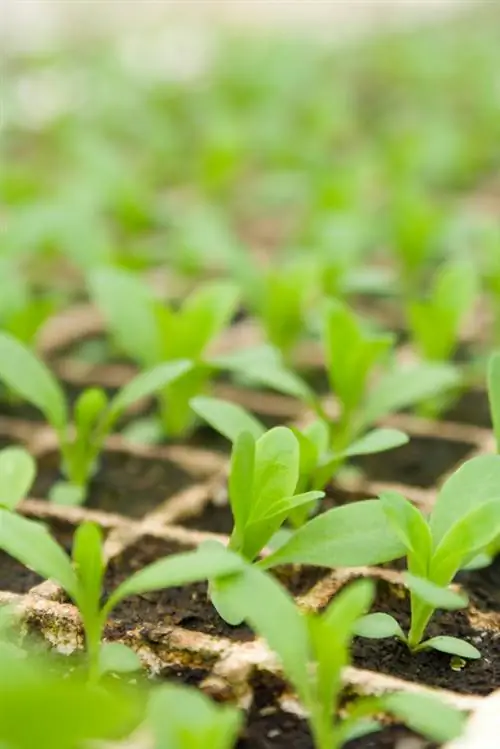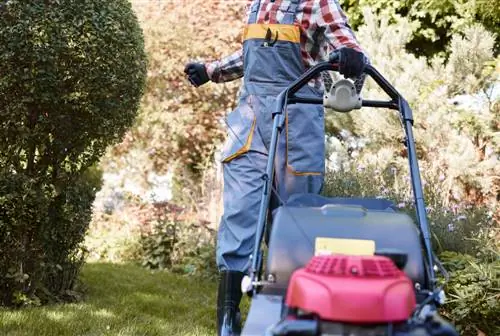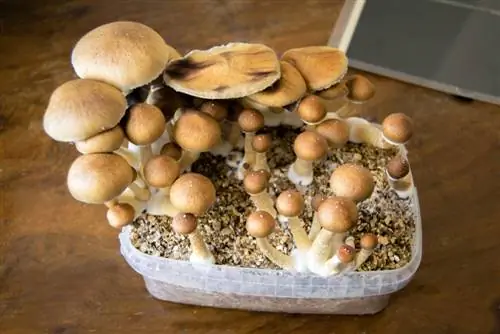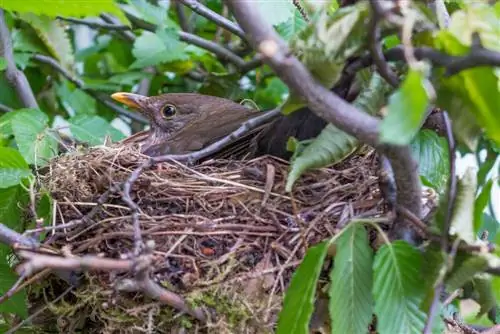- Author admin [email protected].
- Public 2023-12-16 16:46.
- Last modified 2025-01-23 11:20.
Hornbeams are ideal trees for gardeners who want to start growing bonsai. Since the tree is very easy to care for and tolerates pruning particularly well, a very decorative bonsai can be grown from it in a very short time. Tips for growing hornbeam as a bonsai.

How do I care for a hornbeam as a bonsai?
For hornbeam bonsai care, you need well-drained substrate, regular watering and fertilizing, annual repotting and constant cutting back. Wiring is optional and the main pruning occurs in the spring. In winter the bonsai is stored cool but frost-free.
The right substrate for bonsai hornbeams
The substrate must be permeable so that waterlogging does not occur. Mixtures of garden soil, loam, sand and leaf mold are well suited (€5.00 at Amazon). Typical bonsai soils such as Akadama or expanded slate are also recommended.
Caring for hornbeam as a bonsai
- Water regularly
- Fertilize March to September
- repotting in spring
- cut back steadily
The earth must never dry out completely. Because the leaf mass is quite high, hornbeam in its shell should be fertilized regularly. Organic fertilizers are preferable.
Initially the bonsai is repotted annually, later only every two to three years. Fully grown bonsai hornbeams only get a new pot when the pot is completely rooted. Repotting takes place in spring before new shoots appear.
Cutting hornbeam as a bonsai
Since hornbeams naturally grow slightly crooked and stunted, they should not be trained too strictly and especially not in a broom shape.
The main pruning takes place in early spring before the new leaves emerge. The hornbeam can be cut more frequently over the course of the gardening year.
The final cut should take place at the end of August. Otherwise, shoots that grow later will not mature and will freeze in sub-zero temperatures.
Wiring hornbeams is not absolutely necessary
Hornbeams are rarely wired. The shaping is primarily done by cutting.
If you want to wire the hornbeam, you must be very careful as the shoots tear easily.
Overwintering the bonsai hornbeam
Since bonsai grows in a pot, you should not overwinter it too cool. A cool greenhouse is suitable, in which the temperature can be a few degrees below zero.
It is even easier to plant the bonsai and its pot in the garden in autumn and take it out again in spring. This saves time-consuming maintenance measures during the winter.
Tip
If you are particularly concerned that the hornbeam does not become too large and sprawling, grow it into a columnar shape. The hornbeam remains very narrow and can be shortened to the desired height.






